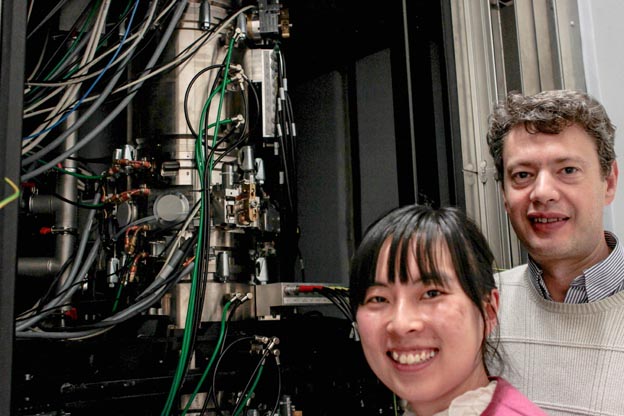11 things you didn’t know were analyzed by Mac’s microscopes

Researcher Guo-zhen Zhu and Gianluigi Botton, scientific director of the Canadian Centre for Electron Microscopy, with the Titan 80-300 Cubed. Between 200 and 300 researchers from universities across Canada alone use the facilities at the Centre, housed at and operated by McMaster.
The Canadian Centre for Electron Microscopy, located at McMaster, is celebrating its fifth anniversary this year.
Run by the Brockhouse Institute for Materials Research, the facility includes transmission electron microscopes, scanning electron microscopes, a focused ion beam and more.
The Centre’s Titan 80-300 Cubed electron microscope – one of the world’s most powerful – arrived at McMaster in 2008, and using it has been described as “taking the Hubble Telescope and aiming it at the atomic level rather than at stars and galaxies.”
Materials scientists, chemists, physicists and structural biologists from Canada and around the world use the Centre’s resources to study both biological structures as well as the structure of materials they have developed.
But what exactly do they work on?
Below are 11 items analyzed using the Canadian Centre for Electron Microscopy’s resources.
- Drug delivery systems based on carbon nanotubes
- Filtration membranes for water purification
- Nanoparticles for medical imaging probes
- Improved steels for pipes
- New materials for fuel cells
- Lighter alloys for automotive applications
- Materials for more efficient nuclear power plants
- Hydrogen storage materials for fuel cells
- More efficient light emitting diodes
- Body armour
- Improved lithium ion battery materials
The CCEM will celebrate its fifth anniversary January 31with a day of lectures in Gilmour Hall Room 111. The celebration will begin at 10 a.m. and will include talks on advanced microscopy, problem solving on an atomic scale, using nanostructured materials for energy conversion and the structure of bone-biomaterials interfaces in 3D.

